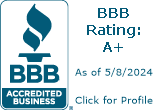As the owner of a solo 401k plan, you are the administrator as well as the trustee of your plan. This means you have total control over the plan and you decide where your retirement savings are invested. When you pass away, this responsibility goes to a trustee that you appointed beforehand. If no trustee was appointed, your retirement account goes to your designated 401k beneficiaries.
Why it’s Important to Name Beneficiaries
Solo 401k plan owners need to name those that stand to inherit their assets when they pass away. If you fail to name your 401k beneficiaries, your plan will likely pass on to your spouse. When there is no surviving spouse, the plan is added to your estate and distributed according to the terms of your will.
If your 401k plan is added to your estate, it has to go through probate with all your other assets. The probate process is often long and costly, and during this time, your survivors will not be able to access the money. When the courts finally release the money, beneficiaries may have no choice but to collect payouts that are heavily taxed. This reduces how much money they stand to inherit.
However, if you complete the “401k Beneficiary Designation” form for your plan, your survivors gain access to your assets immediately after your passing. As a result, they can invest the money according to the instructions you left behind. Even if they choose to cash out the plan, they do so on their terms and without losing too much of the funds.
Choosing a Successor Trustee
As the owner of a Solo 401(k), you are the plan’s trustee. In the event of your passing, control over the plan goes to your spouse or survivors. However, what happens if the beneficiary is too young or lacks the expertise to manage the plan? On another note, what happens to the account if you become unable to manage the account even while you are alive?
By choosing successor trustees, you ensure that your 401k account is protected in case anything happens to you. The trustee takes control of your plan if you pass away or become incapacitated. Ideally, the person you choose to do this must be someone you trust completely. This is important because they may get to decide how your retirement money is invested. Also, when you pass away, they help protect the assets for your survivors.
What Happens to Your Assets After You Pass?
If you picked a trustee before your passing, they take control of your plan and invest your money according to the instructions you left behind. Investment options available to them include luxury real estate, cryptocurrencies, precious metals, stocks, bonds, funds, and many others.
If there is no trustee, the plan goes to the named 401k beneficiaries. If a spouse is the sole 401k beneficiary, they have the following options:
- Transfer the assets to their self-employed plan or to another qualified plan.
- Rollover assets in the plan to an IRA or to an inherited IRA.
- Cash out the account and take a full distribution.
Other inheritors may do one of the following:
- Transfer the money to an inherited IRA and collect minimum distributions every year. The payments will start from the December 31st that follows the plan owner’s death.
- Cash out the account and take a full distribution. Estate tax may be charged on these payments.
Summary
By naming beneficiaries, you make sure that your survivors gain access to your solo 401k account immediately after your passing. You also help them avoid stress and extra costs. If you’re not sure that your survivors can manage your account properly, you may pick a trustee. The trustee is given control of your account if you become incapacitated or deceased. As the owner of a Solo 401k account, it is important that you fill either of these forms and update them yearly (or as needed).





